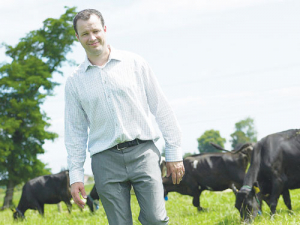DairyNZ says emissions prices suggested by the Productivity Commission would heavily affect NZ farming if the sector faced a full emissions price under the Emissions Trading Scheme.
Productivity Commission chairman Murray Sherwin says farmers should not be scared by his organisation’s latest report on how New Zealand can achieve net zero carbon emissions by 2050.
DairyNZ believes sustainable dairy farming has a critical role to play in NZ’s prosperity and wellbeing.
Chief executive Tim Mackle says farmers intend to farm within environmental limits, including climate change commitments.
The commission’s final report ‘Low Emissions Economy’, released last week, suggests that over the next 30 years NZ’s emissions price should rise to at least $75/tonne of carbon dioxide equivalent, and possibly to over $200/t.
“We can’t expect the average dairy farmer in 2050 to face a yearly emissions cost in the vicinity of $231,800,” says Mackle.
“Emissions prices need to incentivise best environmental practices. But at these prices, without a split gas approach or the availability of methane reducing technology, we would be unfairly penalising NZ farmers.”
Although no decision has been made on agriculture moving into the Emissions Trading Scheme, Mackle says a transition period for the sector is essential for any low emissions pathway the Government decides to take.
“There needs to be a fair and stable transition for the sector while a methane vaccine or inhibitor is developed,” says Mackle.
“We know there needs to be continued and significant government/industry funding for this to occur within the next 30 years.”
The commission also recommended the Government increase its yearly funding for research into methane mitigation technologies to a level that better reflects the potential value of successful outcomes.
“Measures like planting trees and riparian margins will help,” says Mackle. “But even with a significant focus on forestry planting we wouldn’t see the required decrease in agricultural emissions without methane reducing technologies or significant land-use changes.”
He says the dairy sector will meet this challenge, hence its spending for many years on R&D and informing farmers.
“But it needs to be workable and the settings need to be right. The devil is in the detail, and we need to take the time to understand this 600-page report.
The price of ETS
- The average herd size in NZ is 414 cows. The emissions price per farm would vary depending on herd number and environmental initiatives underway.
- If agriculture enters the Emissions Trading Scheme the Government has committed to a transition period during which agriculture would receive a 95% free allocation, meaning farmers would only pay 5% of the emissions price.
- During the transition period of 95% free allocation, the emissions price at $75/tonne works out to $10.50/cow, and up to $28/cow for an emissions price of $200/t if all gases were included in the ETS. This would cost the average farmer $12,170 and $32,500 per year, respectively. A price of $200/t and no free allocation could cost an average farmer about $231,800/year.
Mixed views
Federated Farmers says while the report has many positive aspects, some recommendations will cause disquiet among farmers.
The report’s 620 pages, 173 findings and 78 recommendations make it a doorstop, but it deserves careful scrutiny, says Feds climate change spokesman Andrew Hoggard.
He is worried about the recommendation that plantation forest would need to increase by 1.3 million and 2.8m ha, most of which is now used for sheep and beef farming.
“Up to 2.8m ha more in forestry is about one fifth of all current land in agriculture (about 14m ha). That sort of land-use change would devastate many rural communities in terms of job opportunities and sustaining the social and economic fabric of small towns,” says Hoggard.
He says the NZ pasture system is among the most productive for animal nutrition, notably dairy.
“For example, our greenhouse gas emission per litre of milk is half to one third of the global average.”
Hoggard says the federation is pleased the commission has recognised the “strong” case for boosting funding for research on mitigations farmers could adopt to reduce emissions.


















